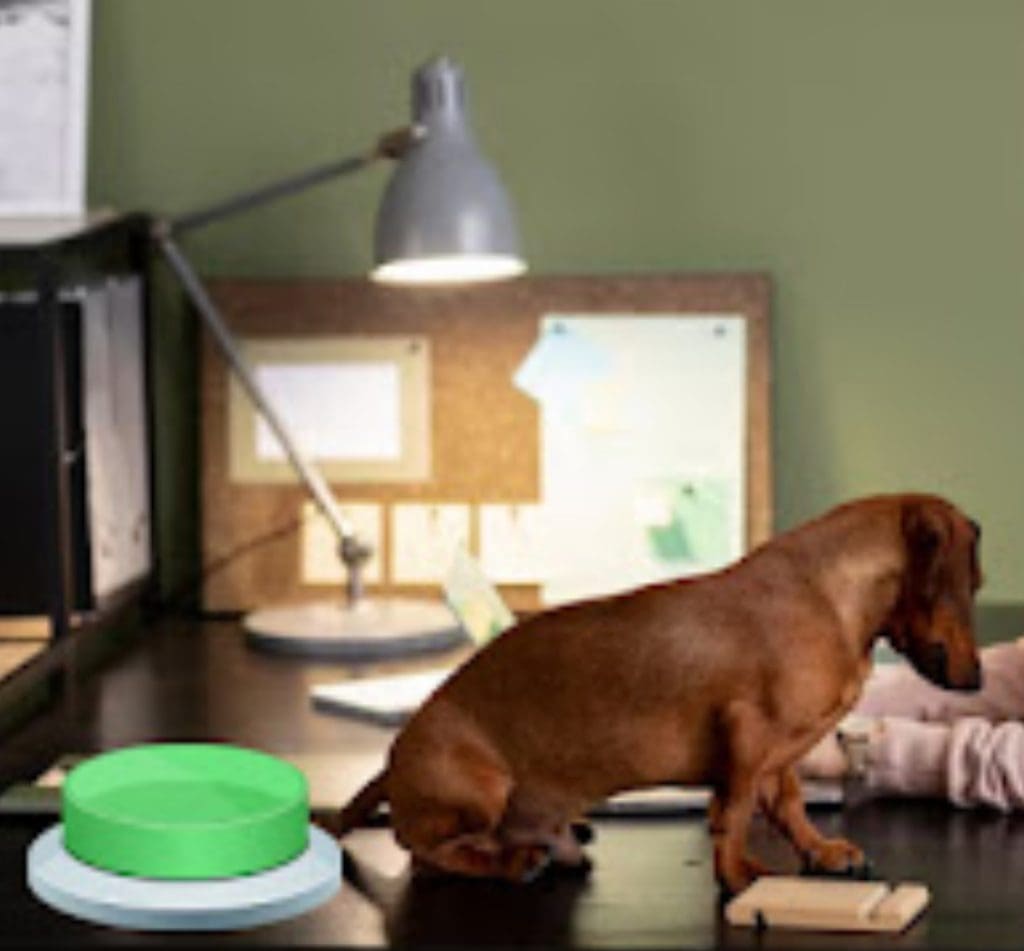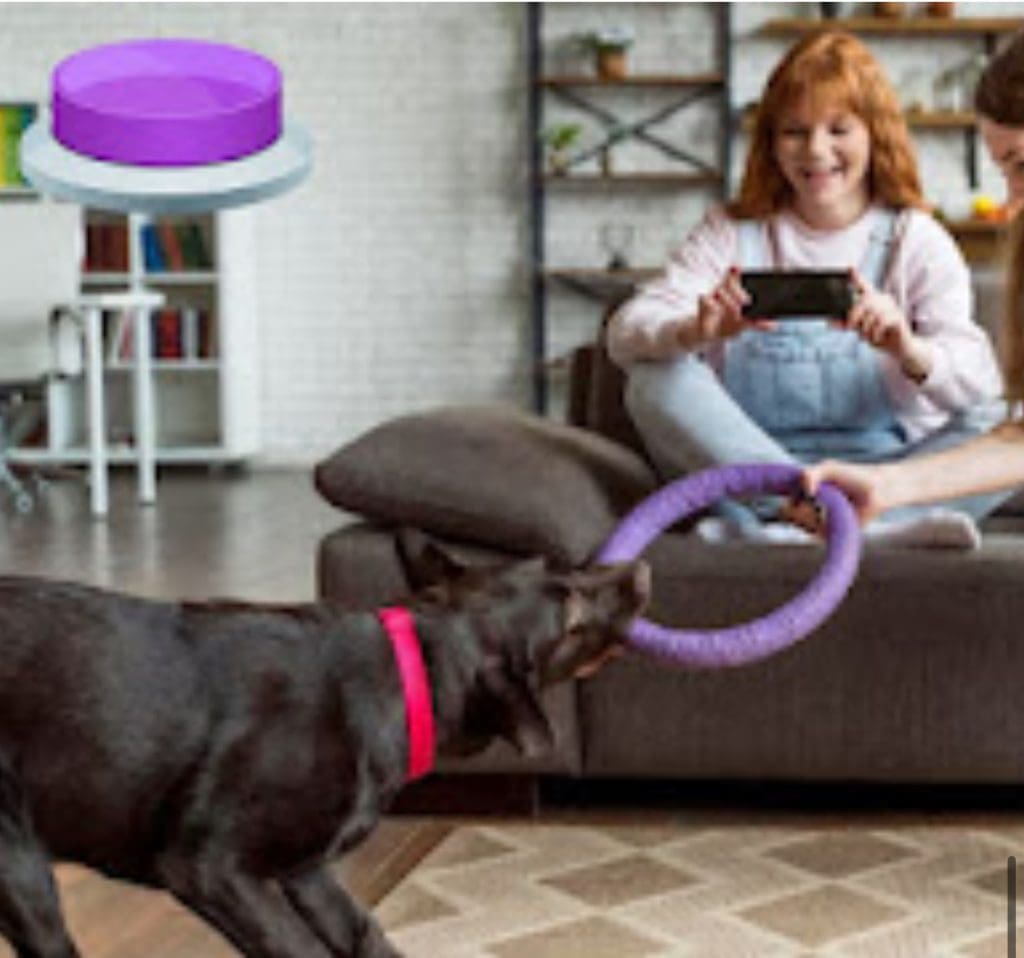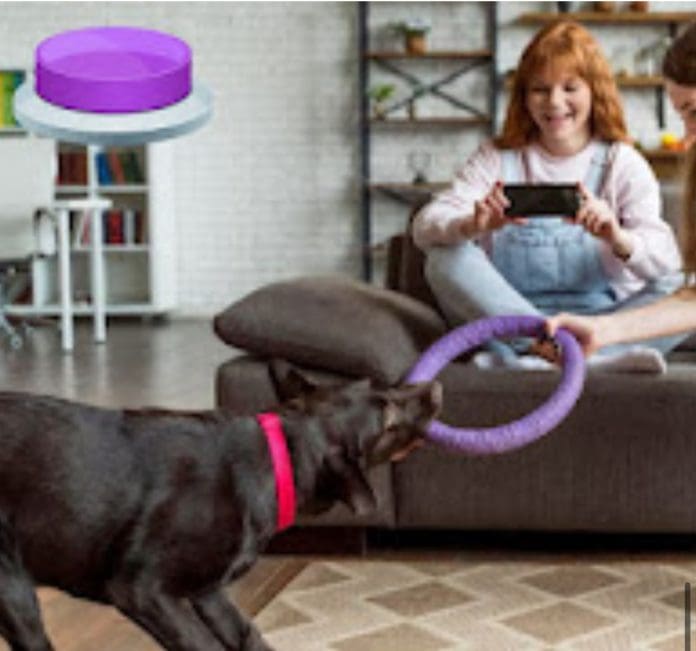Imagine if your dog could tell you exactly what they need—whether it’s food, a walk, or a belly rub. With sound buttons, you can teach your dog to communicate simple commands using recorded words or sounds.
This method is gaining popularity because it helps dogs express themselves clearly, reduces frustration, and strengthens the bond between owners and pets. By using the Sound Button, you can provide an engaging and structured learning experience for your furry friend.
Teaching a dog to use sound buttons takes patience and consistency, but with the right techniques, even a beginner can train their dog effectively.

Why Sound Buttons Work for Dog Training
Sound buttons are designed to help dogs associate a specific word or sound with an action. When they press a button, they learn that a specific response follows, just like verbal commands or hand signals in traditional training.
Dogs are incredibly smart animals that naturally communicate through body language and sounds. They already understand many of our words – that’s how they learn commands like “sit” and “stay.” Sound buttons build on this natural ability by giving dogs a way to “speak” back to us.
The science behind this is called Augmentative and Interspecies Communication (AIC). It’s similar to methods used to help non-verbal people communicate. For dogs, these tools tap into their:
- Natural intelligence and problem-solving skills
- Desire to communicate with their humans
- Ability to connect actions with outcomes
- Love of learning, especially when rewards are involved
How Should You Prepare Before Using Sound Buttons with Your Dog?
Before you rush out to buy sound buttons, you need to prepare yourself and your dog for this new adventure.
Choosing the Right Sound Buttons
Not all sound buttons are created equal! Look for buttons that are:
- Durable enough to withstand dog paws
- Easy to record and re-record sounds on
- The right size for your dog (larger for big dogs, smaller for tiny pups)
- Simple to clean (dogs can be messy!)
With a sound button like SoundBoardButtons.com , pet owners can provide structured, engaging, and effective training sessions. When selecting your first Sound Button for dog training, you’ll want one that’s specifically designed for pet use. After reviewing their specialized recordable buttons, it’s clear they offer products that are durable enough for enthusiastic paws while being simple enough for beginners to use in their dog communication journey.
Setting Up Your Button Training Area
Where you place your buttons matters a lot! Create a “button station” that is:
- In a central location, your dog visits often
- At floor level, where your dog can easily reach
- Away from high-traffic areas that might accidentally trigger buttons
- Consistent (don’t move the buttons around too much at first)
Start with just 2-3 buttons with plenty of space between them. You can add more buttons and arrange them differently as your dog gets better at using them.
What Are the Best First Words to Teach with Sound Buttons?
Starting with the right words will help your dog succeed! Here are the best first buttons to try:
Need-Based Words
Begin with words for things your dog regularly needs or wants:
- Outside (for bathroom breaks)
- Water
- Play
- Food
These work well because they connect to activities that naturally happen several times daily, giving your dog lots of practice opportunities.
Action Words
Once your dog understands the need-based words, add some fun action words:
- Walk
- Ball
- Pets (for when they want attention)
- Toy
These words help your dog express what activity they want to do, not just what they need.

What are the steps to Teach Your Dog Basic Commands with Sound Buttons
Teaching your dog to use sound buttons takes patience and consistency. Follow these steps for the best results.
Step 1: Recording Clear Button Words
How you record the words matters, as consistency helps your dog understand and respond effectively. Always use the same voice for all recordings, ensuring clarity by speaking a bit slower than normal and maintaining a neutral, calm tone. Start with simple words, using one word per button to avoid confusion.
Finally, test each button to confirm that the recording is clear and loud enough for your dog to hear, making communication smooth and effective.
Step 2: Modeling Button Use
Dogs learn by watching us, so you need to show them how buttons work:
- Say the word (like “outside”)
- Press the button so it plays the recording
- Immediately do the action (take your dog outside)
- Act excited when the action happens
Do this modeling many times before expecting your dog to try. Some trainers recommend modeling at least 30 times per button!
Step 3: Helping Your Dog Press the Button
After several days of modeling, help your dog press the button by gently guiding their paw when they show signs of wanting something. As soon as the button makes a sound, immediately provide the promised reward to reinforce the connection. Praise them enthusiastically when they successfully use the button.
In the beginning, reward any interaction, even accidental touches, so your dog sees buttons as a positive tool for communication. Building this understanding encourages confidence and helps them associate pressing buttons with getting what they need.
Step 4: Fading Your Help
Gradually reducing assistance helps your dog build confidence in using the buttons independently. Begin by physically guiding their paw to press the button, then transition to simply pointing at the correct button. As they progress, just looking at the button will prompt them, and eventually, they’ll press it on their own.
This learning process can take days or even weeks, depending on your dog’s pace, so be patient and avoid rushing—consistency and encouragement are key to success.
Conclusion
Learning how to use sound buttons to teach your dog basic commands opens up an amazing new world of communication between you and your furry friend. Starting with simple need-based words, modeling consistently, and gradually helping your dog understand the connection between buttons and outcomes will set you both up for success. Remember that this journey requires patience, consistency, and a sense of fun.







